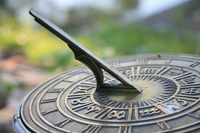
What is a circadian clock?
The first known description of the process that we today call ‘circadian rhythm’ dates back to the early 18th century. Jean Jacques d'Ortous de Mairan, a French astronomer, in 1729 described circadian rhythmicity in the mimosa (Mimosa pudica). He observed an alteration in the folding and unfolding of the mimosa’s leaves, which pertained in even complete darkness. This mechanism ‘discovered’ by de Mairan has later been identified being regulated by an ‘internal clock’ - which as we know today orchestrates all daily functions in organisms of all phyla. Each single cell in an organism has its own clock. These internal clocks coordinate processes from gene expression, tissue metabolism, body temperature regulation to complex behaviours as the rhythm of rest (sleep) and activity (wakefulness). Internal clocks are characterized by inherent and self-sustained rhythms. This property makes the organization of the processes regulated by these internal clocks principally independent from external (eventually disturbing) signals. Circadian rhythms are those temporal biological rhythms that show a period of approximately 24 hours (Latin, circa = about, dies = day). To maintain synchrony with the environmental 24-hour day the internal circadian clocks have to be reset every day by so-called entraining signals. Various external factors have been identified as entraining signals whereas for mammals and humans the most potent signal is the light-dark cycle. The internal circadian clock in, for example, humans, is located in the suprachiasmatic nucleus (SCN) of the anterior hypothalamus in the brain. The SCN receives information via collaterals of the optic nerves coming from the eyes, and is thereby synchronised (entrained) to the 24-hour external light-dark cycle. The SCN then in turn synchronises via nerves and humoral mediators peripheral cell clocks located in every cell of the body. Only a properly entrained circadian clock promotes good quality sleep, health, and well-being.
Chronobiology investigates these biological internal rhythms and the mechanisms behind the temporal organization of living systems. OnTime investigates those mechanisms and the consequences when circadian clocks are challenged – from social jetlag to chronopharmacology and from rodents to humans.


